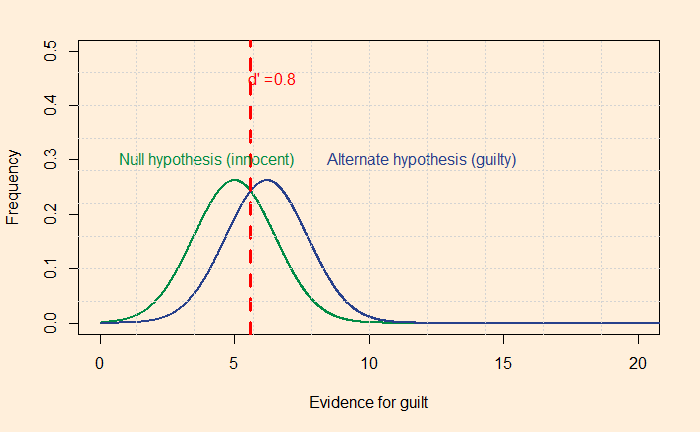We have seen earlier that much of the evidence, depending on the nature, gives only moderate separation of the probability distributions of guilty and innocent curves. Evidence from the eyewitness is a leader that plays a pivotal role in the trial process. The pioneering work of Elizabeth Loftus reveals a lot about the fallibility of memory and the malleability of the brain by misinformation.
It’s in the wording
The first one is on people’s ability to estimate. In one experiment, the participants were asked to guess about the height of a basketball player. One group was asked: “how tall was the player” and the other, “how short was”. The ‘tall’ group estimated a higher number on an average than the ‘short’; the height difference between the tall to short was about 15 mm!
In the second experiment, 100 students were shown a video involving motor accidents and asked a few questions in which 6 were test questions – three of them about what happened in the movie and three that did not. Half of the subjects were given questions that were framed using ‘a’, such as Did you see a …? The other half were asked using ‘the’, such as Did you see the …? An overwhelmingly more number of people responded yes to the ‘the’ questions than the ‘a’ queries, irrespective of whether those events happened in the movie or not.
The role of presupposition
It is about asking one question followed by a second one. The purpose of the first question is to plant some seeds in the participant to influence the subsequent one. Forty undergraduates at the University of Washington were shown a 3-min video taken from the film “diary of a student revolution”. In the end, they were given a questionnaire with 19 filler questions and one key question. Half of the people got the question: “was the leader of the four demonstrators a male?” and the other half “was the leader of the twelve demonstrators a male?”. A week later, the subjects were back to answer 12 questions in which one key question was “how many demonstrators did you see in the movie”. The people who were asked “12” gave an average of 8.85 as the answer, whereas the “4” gave 6.4.
And the result?
The results make descriptions by witnesses one of the least reliable forms of evidence to separate guilty from the innocent. Do you remember the d’ of 0.8 from the earlier post?

Loftus, E. F., Cognitive Psychology 7, 560-572
Elizabeth Loftus: Wiki

